Results 8,551 to 8,560 of 12096
Thread: Anandtech News
-
08-24-18, 05:28 AM #8551
Anandtech: Logitech Launches G Pro Wireless Gaming Mouse with 16,000 DPI Sensor
Professional gamers tend to use wired mice because of their higher polling rate and lower input lag. For many years leading makers of mice have improved their wireless mice for gamers, but those of them who play professionally still use wired devices. Logitech this week introduced its new wireless mouse that uses the company’s latest high-precision sensor along with its Lightspeed wireless technology.
The Logitech G Pro wireless gaming mouse features a classic ambidextrous form factor and removable left and right-side buttons to make it easier to use for lefties. It is based on the company’s HERO (high efficiency rated optical) sensor now rated for 16,000 DPI sensitivity, over 400 inches per second speed, and up to 40G acceleration. The sensor is accompanied by Logitech’s Lightspeed wireless interconnection that cuts the input lag by optimizing internal architecture of input devices, reducing polling rate of wireless receivers to 1 ms, rising signal strength, applying a proprietary frequency hopping mechanism that uses the strongest interference-free channel, and adjusting software stack. Besides, the G Pro wireless gaming mouse is also outfitted with the company’s PowerPlay wireless power system (yet it still comes with a charging cable).
To further optimize the mouse, Logitech reduced its weight to 80 grams and placed its DPI adjustment button on the underside. In addition, following the latest trends it supports the company’s LightSync RGB lighting (which supports the Logitech Gaming Software (LGS).
Logitech says that it had taken it two years to develop its G Pro wireless mouse and it had collaborated with over 50 professional gamers to create the product. The new mouse is more precise than the company’s previous mice featuring the HERO sensor, yet it maintains a very long battery life.
In addition to introducing its G Pro wireless gaming mouse, Logitech also upgraded its G Pro wired gaming mouse with the HERO 16K sensor and a new cable.
Both new Logitech G Pro mice will ship shortly and will be available this month. The wireless model will cost $149.99, whereas the new wired mouse will be priced at $69.99.
Related Reading:
- Logitech Unveils G305 Mouse with Lightspeed Wireless, ‘Hero’ 12,000 DPI Sensor
- Logitech Boosts Precision of G203 Prodigy Mouse to 8000 DPI via Firmware Update
- Logitech Launches G603 ‘Lightspeed’: 12,000 DPI Hero Sensor, 1 ms Polling, 500 Hrs Battery
- Logitech Announces The Ambidextrous G900 Chaos Spectrum Gaming Mouse
More...
-
08-24-18, 12:15 PM #8552
Anandtech: Kishonti GFXBench 5.0 Aztec Ruins OpenGL & Vulkan Benchmark Hands-On
Today Kishonti have finally released their final update to GFXBench version 5.0. The update introduces the new Aztec Ruins scene in two complexity modes as well as OpenGL, Vulkan, and Metal. The new version runs on a new in-house rendering engine and introduces two new tests: Aztec Ruins (High Tier) and Aztec Ruins (Normal Tier). The scene is very much reminiscent of Tomb Raider, showcasing a jungle ruin environment, with an action-adventure like scene. We picked up some devices and profiled the new tests.
More...
-
08-24-18, 02:22 PM #8553
Anandtech: Lite-On Demos Its First ‘Ruler’ EDSFF SSDs: CNEX Labs Controller, Up to 80
Lite-On has demonstrated its first SSD that comes in EDSFF ‘ruler’ form factor, showing off the new drive at FMS earlier this month. The drive uses a controller from CNEX Labs and is designed primarily to enable Lite-On’s customers to start working with the new standard. As a result, Lite-On has not announced any commercial plans for the new SSDs.
Lite-On’s experimental SSD comes in the EDSFF 1U Long form-factor, which is a bit surprising as most companies which demonstrated EDSFF drives at FMS experiment with the 1U Short these days. The SSD is based on an undisclosed controller from CNEX Labs, and which supports both industry-standard NVMe and the upcoming Denali software-defined interface (previously known as Open-Channel SSD). The drive carries 16 TB of Toshiba’s BICS3 3D TLC NAND memory. Meanwhile, Lite-On says that capacity of its 1U Long SSD can be increased to 80 TB when outfitted with 3D QLC NAND as the controller fully supports this type of memory. Besides, the drive carries capacitors for a power-loss protection.
The SSD maker does not disclose performance numbers for its 1U Long drive, but we know that it uses a PCIe 3.1 x4 interface with a maximum theoretical bandwidth of around 3.94 GB/s. Meanwhile we know that CNEX has controllers supporting up to 1.5 million read IOPS in its arsenal, so it is reasonable to assume that the EDSFF prototype drive that Lite-On demonstrated at FMS is rather powerful.
The EDSFF 1U Long form factor brings together performance and density, so at least theoretically all kinds of Lite-On’s clients can use the experimental drives for their applications assuming that they are interested in ‘ruler’ SSDs.
Since the EDSFF is still in development, it is hard to tell when commercial servers featuring the new drives will ship. Meanwhile, operators of large cloud datacenters might adopt ‘ruler’ SSDs well ahead of mainstream servers. That said, it is about time for companies like Lite-On to roll out prototypes of EDSFF SSDs.
Related Reading:
- SSD Form Factors Proliferate At Flash Memory Summit 2018
- Lite-On and Tsinghua Unigroup Create $100 Million Joint Venture for SSD Operations in China
- Lite-On Announces Enterprise EPX M.2 NVMe SSDs: 3D TLC, Up to 1920 GB, 1800 MB/s
- Lite-On SSDs At FMS: New Controllers And TSV NAND Packaging
- Intel Introduces "Ruler" Server SSD Form-Factor: SFF-TA-1002 Connector, PCIe Gen 5 Ready
More...
-
08-24-18, 06:31 PM #8554
Anandtech: AMD Wins Patent Infringement Case Against Vizio & Others; Vizio Ordered To
AMD has won a round in its legal battle against makers of TVs at the United States International Trade Commission (US ITC). The Commission found that Vizio and Sigma Designs have infringed one of AMD’s patents covering fundamental aspects of modern GPUs. The ITC ordered to cease imports of some of Vizio TVs to the U.S.
Back in early 2017, AMD filed a lawsuit with the US ITC against LG, MediaTek, Sigma Designs, and Vizio. The plaintiff accused the defendants of infringing three patents covering fundamental aspects of contemporary graphics processing, such unified shaders (‘133), parallel pipeline graphics system (‘506), as well as a graphics processing architecture employing unified shaders (‘454). Furthermore, the complaint referenced an in-progress patent application covering GPU architectures with unified shaders (‘967) and accused two of the said companies of infringing it as well. Meanwhile all the defendants license (or licensed) their GPU technologies from ARM and Imagination Technologies (though, as we reported back in early 2017, it looks like AMD only accuses SoCs based on ARM’s architecture of infringing its patents).
Eventually, LG settled with AMD out of court. Meanwhile, MediaTek, Sigma Designs, and Vizio are still parts of the US ITC investigation. This week the Commission found that certain Vizio-branded TVs based on Sigma's SoCs infringe claims 1-5 and 8 of AMD's ’506 patent that covers a parallel pipeline graphics system.
The ITC notice does not disclose which products infringe AMD's patent, nor does it list the TVs now barred from the U.S. Keeping in mind that Vizio used certain SoCs from Sigma Designs, which is about to be liquidated, it is unlikely that TVs in question are current, new models. Unfortunately, due to lack of details, it is unclear how important the win is for AMD and what are possible implications for the parties involved. Meanwhile, after issuing a cease and desist order, ITC terminated the investigation, but did not order defendants to pay any remedies.
Related Reading:The List of AMD's Patents Allegedly Infringed by Defendants Patent Name Abstract Description Asserted Claims Filing Date Infringing
IC Products*7,633,506 Parallel pipeline graphics system The parallel pipeline graphics system includes a back-end configured to receive primitives and combinations of primitives (i.e., geometry) and process the geometry to produce values to place in a frame buffer for rendering on screen. 1-9 November 26, 2003 MediaTek Helio P10
SDI SX77,796,133 Unified shader A unified shader unit used in texture processing in graphics processing device. Unlike the conventional method of using one shader for texture coordinate shading and another for color shading, the present shader performs both operations. 1-13 and 40 December 8, 2003 8,760,454 Graphics processing architecture employing a unified shader A GPU that uses unified shaders 2 - 11 May 17, 2011 MediaTek Helio P10 Patent Application 14/614,967 1-8 June 27, 2016 *The list of infringing products is not limited to two ICs.
- AMD Files Patent Infringement Complaint Against LG, MediaTek, Sigma Designs, and Vizio
- NVIDIA Files Patent Infringement Complaints Against Qualcomm & Samsung
- Samsung Files Counter-Suit & Patent Infringement Claims Against NVIDIA & Velocity Micro
- Samsung/NVIDIA Case Update: US ITC Finds Samsung GPUs Non-Infringing
- US ITC Finds NVIDIA Guilty of Infringing Three Samsung Patents
- NVIDIA & Samsung Settle All Patent Infringement Disputes
Sources: ITC, Seeking Alpha, Bloomberg
More...
-
08-27-18, 07:36 AM #8555
Anandtech: MSI B360 Gaming Plus & B360 Gaming Arctic Review: Paternal Twins On The Ch
Today we get an opportunity to look at two motherboards out of MSI's B360 stable in the form of the B360 Gaming Plus and B360 Gaming Arctic. The two boards look dramatically different – with one black and red and the other white – however, under the hood they share the same DNA. Both boards include a single PCIe x4 M.2 slot, five SATA ports, Crossfire support, Intel Ethernet, Realtek audio and more making for a well-rounded option in the non-overclocking B360 lineup. We'll take a look at the boards to see what makes them tick and run them through our performance tests.
More...
-
08-27-18, 09:59 AM #8556
Anandtech: AMD Slashes Prices of First-Gen Ryzen Threadripper CPUs: Starting at $300
Following the launch of its second-generation Ryzen Threadripper processors earlier this month, AMD quietly began to slash prices of its first-gen Ryzen Threadripper CPUs. Right now, the most affordable Threadripper (1900X) costs around $300, whereas the former flagship 16-core processor is available for $720. However, there is a catch. Platforms featuring AMD’s X399 chipset and the TR4 socket are not cheap. Besides, if demand for processors increases spontaneously, so will the prices of motherboards.
Now that some of AMD’s Ryzen Threadripper 2000-series processors are available for purchase, the original Ryzen Threadripper 1000-series look less attractive for the target audience and while there is no direct competition between the two product lines right now, it is in AMD’s best interests to sell off the remaining stock of the first-gen HEDT chips as soon as possible. In a bid to speed up the process, AMD recently slashed SRPs (suggested retail prices) of its first-gen Ryzen Threadripper processors to levels significantly below those set earlier this year, though not considerably below campaign prices.
As a result of the price cut, the eight-core Ryzen Threadripper 1900X will cost around $300, the twelve-core Ryzen Threadripper 1920X will be priced at circa $400, whereas the former flagship Ryzen Threadripper 1950X will be available for $799. A quick check with Amazon indicates that retail prices of the said CPUs are very close to their SRPs, or even below them. For example, the octa-core 1900X is now available for $308, whereas the 16-core 1950X can be purchased for $720. The 1900X has more memory channels and PCIe lanes than any regular Ryzen processor, so the chip makes sense for those who need a lot of DRAM bandwidth and/or plans to use multiple high-end SSDs and/or graphics cards.
Evidently, Threadrippers need an AMD X399-based motherboard with the TR4 socket, which are usually more expensive than platforms for AMD’s mainstream Ryzen CPUs. MSI’s X399 SLI Plus — one of the more affordable TR4 mainboards — is currently available for $310, which is significantly higher than enthusiast-class motherboards for regular Ryzen processors (priced at $200 – $270). Furthermore, if demand for such platforms skyrockets because of affordable CPUs, retailers will hike their prices.AMD's High-Performance Desktop CPUs Cores/
ThreadsBase/
TurboL3 DRAM
1DPCPCIe TDP SRP Retail
PriceTR 2990WX 32/64 3.0/4.2 64 MB 4x2933 60 250 W $1799 $1799 TR 2970WX 24/48 3.0/4.2 $1299 - TR 2950X 16/32 3.5/4.4 32 MB 180 W $899 - TR 1950X 3.4/4.0 4x2667 $799 $720 TR 2920X 12/24 3.5/4.3 4x2933 $649 - TR 1920X 3.5/4.0 4x2667 $399 $449 TR 1900X 8/16 3.8/4.0 16 MB $299 $308 Ryzen 7 2700X 8/16 3.7/4.3 16 MB 2x2933 16 105 W $329 $319 Ryzen 7 1800X 8/16 3.6/4.0 16 MB 2x2667 95 W ? $244
It is unknown how many Ryzen Threadripper 1000-series CPUs are still in stocks of retailers and AMD as well as how fast these stocks will last. AMD’s Ryzen Threadripper 2950X is set to be released on August 31, whereas the model 2920X is due in October. Obviously, AMD is inclined to get rid of the first-gen Ryzen Threadripper chips as soon as possible so to avoid any internal competition.
Buy AMD Ryzen Threadripper 1900X on Amazon.com
Buy AMD Ryzen Threadripper 1920X on Amazon.com
Buy AMD Ryzen Threadripper 1950X on Amazon.com
Buy MSI X399 SLI Plus on Amazon.com
Related Reading:
- The AMD Threadripper 2990WX 32-Core and 2950X 16-Core Review
- Cooler Master Launches Wraith Ripper Cooler for Threadripper 2 CPUs
- The AMD Threadripper 2 Teaser: Pre-Orders Start Today, Up to 32 Cores
Sources: Amazon, 3DCenter
More...
-
08-27-18, 03:31 PM #8557
Anandtech: GlobalFoundries Stops All 7nm Development: Opts To Focus on Specialized Pr
GlobalFoundries on Monday announced an important strategy shift. The contract maker of semiconductors decided to cease development of bleeding edge manufacturing technologies and stop all work on its 7LP (7 nm) fabrication processes, which will not be used for any client. Instead, the company will focus on specialized process technologies for clients in emerging high-growth markets. These technologies will initially be based on the company’s 14LPP/12LP platform and will include RF, embedded memory, and low power features. Because of the strategy shift, GF will cut 5% of its staff as well as renegotiate its WSA and IP-related deals with AMD and IBM. In a bid to understand more what is going on, we sat down with Gary Patton, CTO of GlobalFoundries.
More...
-
08-27-18, 05:14 PM #8558
Anandtech: AMD: Jim Anderson Out, Saeid Moshkelani In as “Client Compute Group” Gener
In a press release sent out this afternoon, AMD has announced a shuffle in leadership for the company’s client computing business unit, the core of AMD’s business and heart of their recent resurgence. Jim Anderson, who has been serving as the Senior Vice President and General Manager of AMD’s Computing and Graphics business group, is departing from the company. In his place, Saeid Moshkelani is being promoted to the position of Senior Vice President and General Manager of what AMD is dubbing the Client Compute Group.
Jim Anderson had been serving as the GM of the Compute and Graphics group for the past 3 years. In his position, he reported directly to Dr. CEO Lisa Su and was responsible for the entirety of AMD’s client computing business, overseeing engineering, sales, and the general strategy of the group. AMD originally brought Anderson on board to turn around their client computing group in its darkest hour towards the tail-end of the Bulldozer generation, and in that respect, Anderson has been extremely successful, as Ryzen CPU sales have been very strong for AMD.
After that success, however, Anderson has decided that he wants to leave to “pursue other opportunities”, according to AMD. And just looking at AMD’s hierarchy, as he was already SVP and GM of the group, there’s little room left inside of AMD for advancement. So for someone whose next step would be CEO, the best options are to either bide his time until the CEO spot becomes available (unlikely), or leave the nest and become a CEO at another company. In this case Anderson has opted for the latter, departing AMD and heading over to Lattice Semiconductor to be their new CEO.
Replacing Jim Anderson will be an AMD insider, Saeid Moshkelani. Moshkelani is an engineering track executive whom prior to joining AMD in 2012, worked as an engineer and later in various engineering management roles at other companies. Since joining AMD, he has been serving as the GM of the Semi-Custom business unit. Curiously, his LinkedIn profile lists him as being promoted to a Corporate Vice President and General Manager of AMD’s “Client compute Business Unit” in May. However AMD had never publicly announced that promotion, and it’s not clear to me whether this is retroactive, or something different from his new role.
At any rate, Moshkelani is now a Senior Vice President and the GM in charge of what AMD is calling their “Client Compute Group”. In practice his duties appear to be identical to Anderson’s, in that he’s overseeing every aspect of AMD’s client computing products. And like Anderson, he will now report directly to Lisa Su.
Overall, this executive shuffle is the latest high-profile departure for AMD. Anderson’s approximate counterpart on the GPU side of matters, Raja Koduri, left for Intel back at the end of 2017. So in the last year we’ve now seen the entire leadership of AMD’s client product groups replaced. And while the nature of these changes is rarely transparent – whether it’s someone leaving on their own volition or if AMD is cleaning house – what’s clear is that this is increasingly a very different AMD from what it was a short few years ago, with new product architectures and now new executives overseeing them.
More...
-
08-27-18, 05:48 PM #8559
Anandtech: AMD's 7nm CPUs & GPUs To Be Fabbed by TSMC, on Track for 2018 - 2019
With the announcement that its long-time manufacturing partner (and outright former fab) GlobalFoundries is dropping out of the race for bleeding-edge manufacturing nodes, the second big question of the day has been what this means for AMD. For all intents and purposes, AMD and GlobalFoundries have been tied at the hip since GloFo was spun off from AMD back in 2009, and consequently GloFo has always been AMD’s fab of choice for CPUs, and more recently GPUs. So with GlobalFoundries’ changes to their process development plans, AMD is outlining their new partnerships and manufacturing plans.
In short, AMD is now shifting over the bulk of their bleeding-edge development to TSMC. The company is careful to note that they “intend to focus the breadth” of their 7nm production at TSMC rather than all 7nm production – leaving open the possibility of using TSMC rival Samsung in the future – but the message is clear that we should expect AMD’s major 7nm products to be fabbed out of TSMC now that GlobalFoundries is no longer an option.
TSMC being AMD’s new bleeding-edge partner should of course come as no surprise, as TSMC has been the fab AMD has fallen back on for other projects in the past. TSMC was until the most recent generation the fab AMD used for their GPUs, and it’s where their semi-custom APUs for Microsoft and Sony have been made. Meanwhile AMD and TSMC have already previously announced that some of AMD’s forthcoming 7nm products, including their 7nm Vega and “Rome” EPYC CPU would be fabbed by the Taiwanese foundry. So today’s announcement is largely confirmation that AMD is going to continue down this path, with most (if not all) of their other planned 7nm products ending up at TSMC as well.
As it stands then, AMD’s plans remain largely unchanged. AMD’s 7nm Vega GPU has been successfully taped out, and it is currently sampling among AMD’s customers with a commercial launch towards the end of this year. Then in 2019, AMD intends to release its CPUs featuring its Zen 2 microarchitecture. These processors will also be fabbed by TSMC and the chip designer has already received the first working silicon.
Farther out, AMD’s announcement also confirms that their upcoming Navi architecture GPUs, which are also planned for 7nm, will be fabbed at TSMC. Though AMD has not disclosed any timeframes regarding these GPUs and whether any of them have been taped out.
Overall, AMD seems reasonably happy with the current state of affairs, stating that “Our work with TSMC on their 7nm node has gone very well and we have seen excellent results from early silicon.” As a close GlobalFoundries customer, I have to imagine that AMD was the first such customer informed of these plans, so they’ve had the most time to adjust their internal plans. None the less, the company sees it as win for their “flexible foundry” strategy, and as a result, they do not expect any changes to their product roadmaps despite the foundry changes.
That said, while AMD seems to be handling this well, this isn’t a feint on their part, and that they’ve had to make changes behind the scenes. The company has confirmed to us that they had started development of a chip to be made using GlobalFoundries' 7LP process technology, but this one had not been taped out yet (it was on track for a Q4 tape out, according to GF). So we will be seeing products that weren’t originally intended for TSMC.
As for AMD’s GlobalFoundries relationship, the company will be continuing to work with GlobalFoundries for some time to come. GloFo is still AMD’s fab for their current Vega, Polaris, and Zen/Zen+ chips, and AMD will continue making chips there. Furthermore should AMD decide to start on any new chips that don’t require a bleeding-edge manufacturing process (e.g. a chipset), then GlobalFoundries is still an option.
The biggest remaining question then will be what this means for AMD and GlobalFoundries longstanding Wafer Share Agreement (WSA), which has kept the two companies bound together tightly and required that AMD do most of its manufacturing at their former fab. Today’s announcement from GlobalFoundries and AMD has confirmed that the two companies will be renegotiating the WSA – presumably a requirement should GloFo no longer intend to offer bleeding-edge nodes – though to what extent remains to be seen. AMD by their own admittance is betting very heavily on 7nm products, so it’s not clear whether the company is going to need all that many wafers from GlobalFoundries in a couple years’ time. In the meantime, AMD does not believe it is going to need any WSA with TSMC.
Related Reading:
- GlobalFoundries Stops All 7nm Development: Opts To Focus on Specialized Processes
- AMD “Rome” EPYC CPUs to Be Fabbed By TSMC
- AMD Demos 7nm Vega GPU: Betting Big on Machine Learning for Radeon Instinct; Shipping This Year
- The AMD Threadripper 2990WX 32-Core and 2950X 16-Core Review
- More Details About the ZhongShan Subor Z+ Console, with Custom AMD Ryzen SoC
- The AMD 2nd Gen Ryzen Deep Dive: The 2700X, 2700, 2600X, and 2600 Tested
More...
-
08-27-18, 08:36 PM #8560
Anandtech: NVIDIA Releases 399.07 WHQL Game Ready Driver
In the wake of last week’s GeForce RTX 20-series announcements, today NVIDIA has released driver version 399.07 WHQL, bringing Game Ready support for the Battlefield V Open Beta, as well as support for F1 2018, Immortal: Unchained, Pro Evolution Soccer 2019, Strange Brigade, and Switchblade. Just as importantly, 399.07 additionally consolidates the recent 398.86 and 398.98 hotfixes, the former resolving windowed G-Sync stuttering on Windows 10 April 2018 Update, and the latter resolving LA Noire VR and Call of Duty Black Ops 4 Beta issues.
The Battlefield V Open Beta starts September 6, with early access on September 4 for Battlefield V pre-orders and Origin/EA Access subscription members. For NVIDIA, the upcoming Battlefield V (10/19/18) is also acting as a ‘flagship’ title of sorts for Turing’s real-time raytracing effects, alongside Shadow of the Tomb Raider (9/14/18) and Metro Exodus (2/22/19). Since GeForce Turing has yet to launch, Battlefield V’s various real-time raytracing effects are not applicable to the Open Beta, and because those effects are built on the Microsoft DirectX Raytracing API that has yet to release in full, the timeline is not clear.
The situation underlines, of course, the important caveat to Turing’s forward-looking features: explicit developer support in games. Displayed prominently at Gamescom 2018 and on their website, the three titles are part of 22 total games that NVIDIA have announced are supporting at least one RTX platform feature, which includes various real-time raytracing effects and deep learning super sampling (DLSS).NVIDIA RTX Support for Games
As of August 20, 2018Game* Real-Time Raytracing** Deep Learning Super Sampling (DLSS) Ark: Survival Evolved - Yes Assetto Corsa Competizione
(9/12/2018)Yes - Atomic Heart
(2019)Yes Battlefield V
(10/19/2018)Yes - Control
(2019)Yes - Dauntless - Yes Enlisted Yes - Final Fantasy XV - Yes Fractured Lands - Yes Hitman 2
(11/13/2018)- Yes Islands of Nyne - Yes Justice Yes JX3 Yes MechWarrior 5: Mercenaries
(2019)Yes Metro Exodus
(2/22/2019)Yes - PlayerUnknown's Battlegrounds - Yes ProjectDH Yes - Remnant: From the Ashes
(2019)- Yes Serious Sam 4: Planet Badass - Yes Shadow of the Tomb Raider
(9/14/2018)Yes - The Forge Arena - Yes We Happy Few - Yes *Not all release dates are listed for upcoming games; some are in an alpha/early-access/perpetual beta type stage
**Specific effects (i.e. shadows, reflections, ambient occlusion) implemented per-game has not been announced
As for the bug fixes, 399.07 lists the following resolved issues:
- Setting TAA at 100% in Rainbow Six Siege causes screen to be blurry when not moving in after driver update.
- Fixed diagonal tearing by using win7-blit model for MSHybrid (Optimus) notebooks.
- OpenGL driver does not release the rendering context correctly for GTX 1050 and 1070
- Blue-screen crash occurs when using Oculus VR software.
- On 600/700 series Kepler GPUs, missing textures in DOOM when using Vulkan API.
- Stability issues occur when running LA Noire VR.
- Stuttering and performance issues occur for some Call of Duty Black Ops 4 configurations.
- Windowed G-Sync mode may stutter after upgrading to Windows 10 Spring Creators Update.
Meanwhile, NVIDIA lists the following open issues for Windows 10:
- The game stops responding when trying to enter any multiplayer game or single player mission with HDR and SLI enabled on Battlefield 1 with DX12 on.
- Some objects render incorrectly over the sticker when using the Freestyle Sticker filter on SLI configurations for Immortal: Unchanged
- NVIDIA graphics driver may not install correctly on certain Core 2 Duo/Quad systems.
- On GeForce GTX 1060 configurations, AV receiver switches to 2-channel stereo mode after 5 seconds of audio idle.
- Cursor shows brief corruption when hovering on certain links in Firefox.
- Random DPC watchdog violation errors occur when using multiple GPUs on motherboards with PLX chips.
- Using power monitoring in GPU monitor tools causes micro stutter.
The updated drivers are available through the GeForce Experience Drivers tab or online at the NVIDIA driver download page. The latest GeForce Experience client can also be found separately on its own download page. More information on this update and further issues can be found in the 399.07 release notes.
More...
Thread Information
Users Browsing this Thread
There are currently 47 users browsing this thread. (0 members and 47 guests)






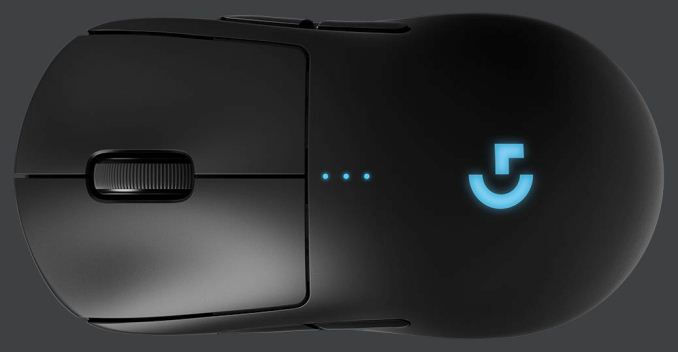
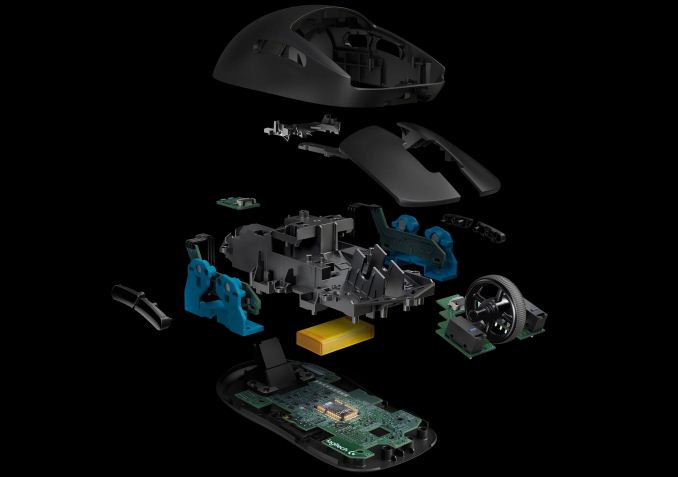

 Quote
Quote
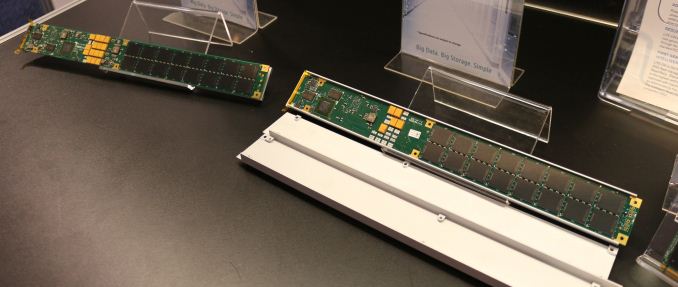
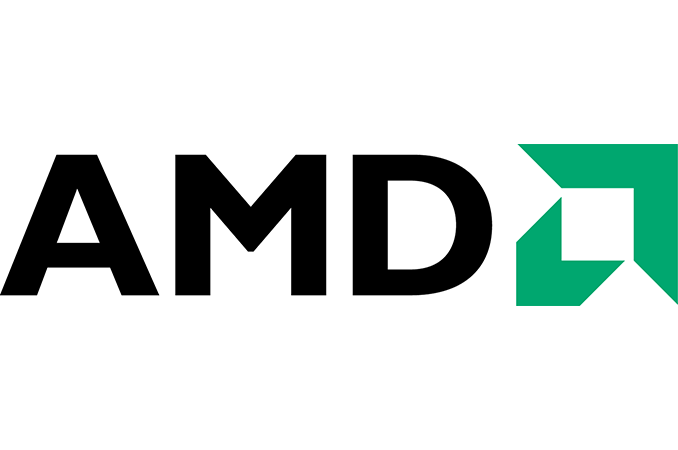
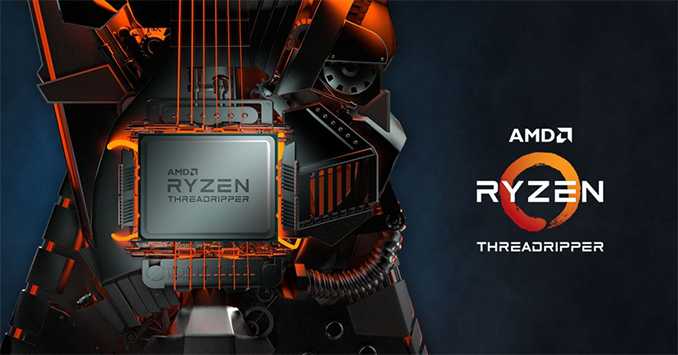
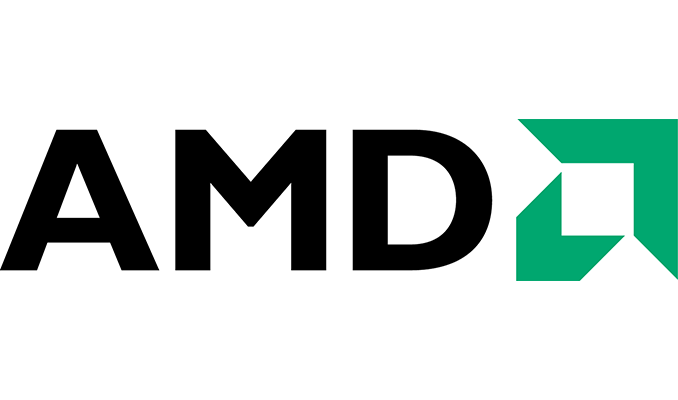


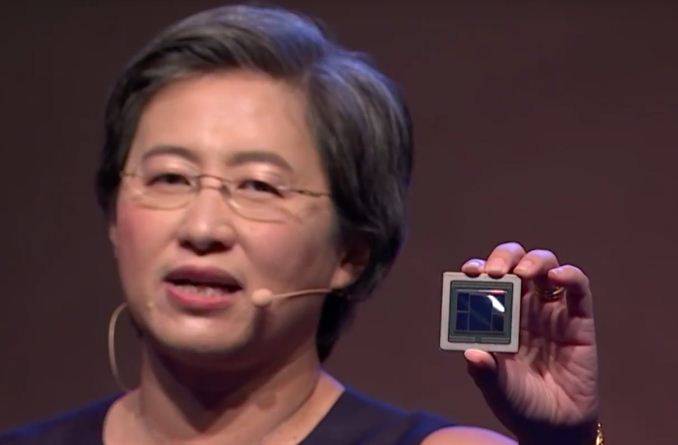
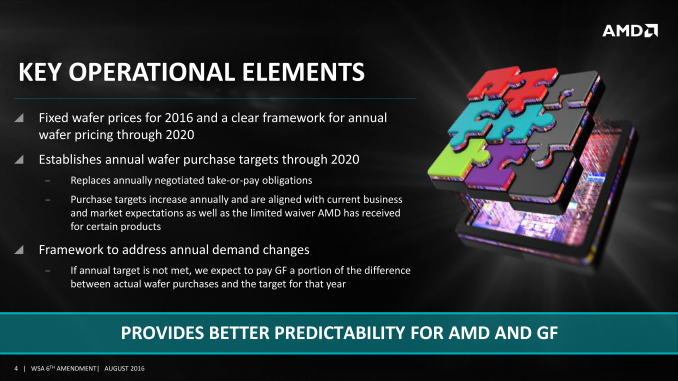
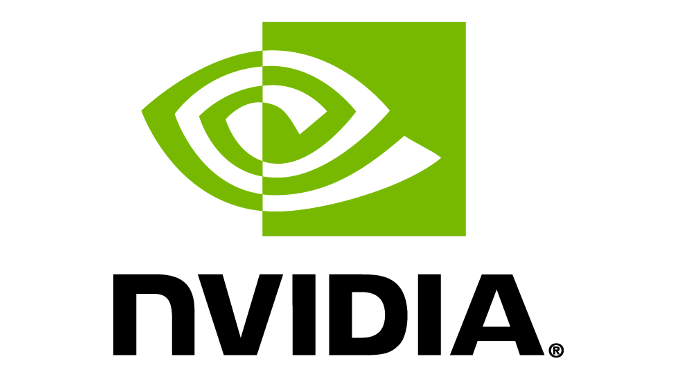
















Bookmarks